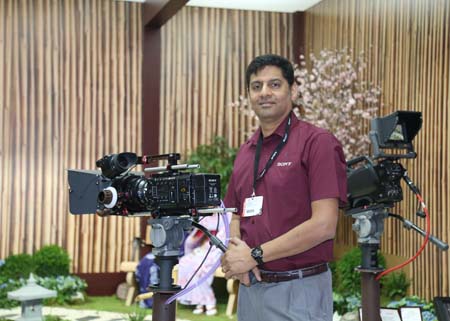Today, 4K is suddenly everywhere: from consumer TVs, cameras, tablets and phones to cinema projectors and medical imaging devices. And just like HD before it, 4K is having an equally profound effect on our perceptions of picture quality. Sitting just a couple of metres away from a 65 UHD TV, the most sharp-eyed human observer […]

Today, 4K is suddenly everywhere: from consumer TVs, cameras, tablets and phones to cinema projectors and medical imaging devices. And just like HD before it, 4K is having an equally profound effect on our perceptions of picture quality. Sitting just a couple of metres away from a 65 UHD TV, the most sharp-eyed human observer cant discern those eight million individual pixels.
The 4K story is beyond big screens. More than ever before, youre instantly judged by how your content looks on every size of screen whether youre producing news, sport, drama, factual or entertainment. So the key question in todays competitive marketplace is: How can I maximise viewer engagement with pictures that really stand out from the crowd?
By the end of this year, the first fully commercialised 4K Ultra HD services will be on air in anything up to half a dozen countries, with Japans NHK leading the charge. And ahead of mainstream broadcast launches, 4K is quickly finding traction with over-the-top content players. As the installed base of UHD-ready display grows, leading internet video platforms including Netflix and Amazon are standardising on 4K for the content they distribute.
In the film world, 4K is replacing 35mm for acquisition and distribution of movies. Digital projection has been the norm in cinemas for several years now, and this transition will reach its natural conclusion when studios and distributors abandon celluloid altogether.
Meanwhile, 4K content is rapidly making its way into a huge range of other environments, too. New-generation projectors can beam astonishing super-size 4K images into galleries and museums, retail stores, boardrooms and industrial design/simulation suites.
Better-looking pictures on real-world budgets
For broadcasters and content creators, todays challenge is delivering better-looking pictures on real-life production budgets. The good news is that 4K acquisition tools now available can dramatically reduce the commercial risks of 4K. Operation is reassuringly familiar, while 4K picture quality is phenomenally sharp and detailed, even with fast-moving sports footage. Even better, one platform is all you need for 4K, HD and 8x super slow motion. It really is a game-changer.
Of course, 4K isnt just about counting pixels. Just as important for viewers experience is the huge jump forward that 4K offers in terms of higher dynamic range. Coupled with the extra detail and expanded colour space of 4K, HDR boosts audiences sense of dramatic engagement.
Improved audience engagement, today and tomorrow
For live and recorded workflows alike, the conversation were having with many of our broadcast and AV media customers right now is about future-proofing. With real-world production costs that already compare very favourably with HD, shooting in 4K is the sensible default option for a huge range of projects.
Theres another valuable payoff from acquiring in 4K today. 4K footage thats been down converted to full HD looks stunning giving your content an immediate premium with viewers while maximising its shelf-life.
Just like HD over a decade ago, 4Ks commercial viability depends on a smooth end-to-end workflow supported by a complete ecosystem, from capture to transmission and archive. XAVC has quickly proved its worth as a one-size-fits-all solution in live UHD production environments, where its ideal for 4K master recordings as well as live streaming to editing platforms and archive, too.
Vivian Saldanha is Business Head Content Creation Sales and Market Development at Sony Professional Solutions MEA.
















































































